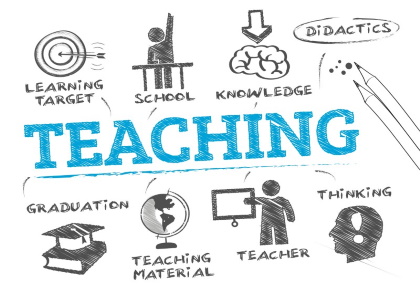In recent years, the landscape of education in the United States has been rapidly evolving, with new teaching strategies and approaches emerging to better meet the needs of today’s students. Teachers are at the forefront of these changes, adapting to innovative methods that aim to enhance learning, engagement, and critical thinking. This article explores some of the most impactful modern teaching strategies from the perspective of U.S. teachers, highlighting what’s working and where challenges remain.
1. Project-Based Learning (PBL)
Project-Based Learning is an instructional approach where students learn by actively engaging in real-world and personally meaningful projects. PBL encourages students to investigate and respond to complex questions or problems, often resulting in a tangible product or presentation.
Teacher Insight: Many teachers report that PBL has been a game-changer in their classrooms. It allows students to take ownership of their learning and see the relevance of what they’re studying. Teachers have observed that PBL helps students develop critical thinking, collaboration, and communication skills. However, implementing PBL can be challenging, especially in standardized testing environments where there is pressure to cover specific content quickly. Teachers have to carefully balance the depth and breadth of their curriculum while ensuring that PBL projects align with educational standards.
2. Flipped Classroom
The flipped classroom model reverses the traditional learning environment by delivering instructional content, often online, outside of the classroom. Class time is then used for exercises, projects, and discussions that reinforce the material. This approach allows students to learn at their own pace and come to class prepared to engage in deeper learning.
Teacher Insight: Teachers who have adopted the flipped classroom model appreciate how it frees up class time for interactive, hands-on activities. Students can review the content as many times as needed at home, which is particularly beneficial for those who need extra time to grasp new concepts. However, the success of the flipped classroom depends heavily on students’ access to technology and their motivation to complete the preparatory work. Teachers must also invest significant time in creating or curating high-quality video lessons and materials.
3. Social-Emotional Learning (SEL)
Social-Emotional Learning focuses on developing students’ emotional intelligence, including their ability to understand and manage emotions, set and achieve positive goals, show empathy for others, establish and maintain positive relationships, and make responsible decisions. SEL is increasingly recognized as essential to students’ overall success and well-being.
Teacher Insight: Teachers have seen firsthand the benefits of incorporating SEL into their classrooms. Students who are emotionally supported tend to perform better academically and socially. SEL helps create a positive classroom environment where students feel safe and respected, which in turn fosters better engagement and participation. However, integrating SEL into the curriculum can be challenging, especially in schools where time and resources are limited. Teachers often advocate for more professional development and support in implementing effective SEL practices.
4. Gamification
Gamification involves applying game-design elements in non-game contexts, such as the classroom, to motivate and engage students. This approach can make learning more fun and interactive, encouraging students to participate and persevere through challenges.
Teacher Insight: Many teachers have found that gamification increases student motivation and enthusiasm for learning. Tools like educational games, point systems, and badges can make learning objectives more engaging and attainable. Gamification also fosters a sense of competition and achievement, which can drive students to perform better. However, it requires careful planning to ensure that the games are educational and align with learning goals, rather than becoming mere distractions. Additionally, not all students may respond equally well to competitive environments, so it’s important to balance gamification with other teaching strategies.
5. Culturally Responsive Teaching
Culturally responsive teaching acknowledges the cultural backgrounds of students as essential components of the learning process. This approach involves recognizing and honoring students’ cultural identities, integrating their experiences into the curriculum, and promoting equity and inclusivity in the classroom.
Teacher Insight: Teachers who practice culturally responsive teaching believe it helps create a more inclusive and engaging learning environment. By incorporating diverse perspectives and materials into their lessons, teachers can make learning more relevant to all students, particularly those from marginalized communities. Culturally responsive teaching also helps to build stronger relationships between teachers and students, fostering mutual respect and understanding. However, teachers note that this approach requires continuous self-reflection and learning, as well as access to diverse teaching materials and resources, which are not always readily available.
6. Differentiated Instruction
Differentiated instruction involves tailoring teaching methods and materials to meet the diverse needs of students within the same classroom. This approach recognizes that students have varying levels of readiness, interests, and learning styles, and it aims to provide multiple pathways for students to achieve academic success.
Teacher Insight: Differentiated instruction is highly valued by teachers because it allows them to meet students where they are, providing support for those who need it while challenging those who are ready to advance. Teachers often use a variety of instructional strategies, such as small group work, individualized assignments, and tiered activities, to accommodate different learning needs. However, differentiated instruction can be time-consuming to plan and implement, especially in large classes. Teachers sometimes struggle to balance the needs of all students while ensuring that each one receives the attention they deserve.
7. Technology Integration
The integration of technology into the classroom has transformed the way teachers deliver instruction and how students learn. From interactive whiteboards and tablets to educational apps and online resources, technology offers endless possibilities for enhancing education.
Teacher Insight: Teachers appreciate how technology can make lessons more interactive and accessible. For example, online platforms like Google Classroom allow for easy distribution of assignments and resources, while educational apps can help reinforce learning in a fun and engaging way. Technology also enables teachers to differentiate instruction and provide immediate feedback. However, the digital divide remains a significant challenge, as not all students have equal access to technology at home. Additionally, teachers need ongoing training to stay current with the latest tools and effectively integrate them into their teaching.
8. Collaborative Learning
Collaborative learning encourages students to work together in groups to solve problems, complete tasks, or explore new concepts. This approach fosters communication, teamwork, and critical thinking skills, preparing students for real-world situations where collaboration is key.
Teacher Insight: Teachers who use collaborative learning strategies find that they help build a strong classroom community. Students learn to listen to each other, share ideas, and work towards a common goal. Collaborative learning also allows students to take on different roles within the group, helping them develop leadership and interpersonal skills. However, managing group dynamics can be challenging, and some students may struggle with collaboration. Teachers often need to provide guidance and structure to ensure that all students contribute and benefit from the group work.
9. Inquiry-Based Learning
Inquiry-based learning is an educational approach where students are encouraged to explore, ask questions, and investigate topics of interest. This method promotes active learning, critical thinking, and a deeper understanding of the subject matter.
Teacher Insight: Teachers who implement inquiry-based learning appreciate how it engages students in the learning process and encourages them to think critically and independently. By allowing students to explore topics that interest them, teachers can foster a love of learning and help students develop important research and problem-solving skills. However, inquiry-based learning requires careful planning and support, as students need guidance in developing their questions and conducting their investigations. Teachers must also be comfortable with a more student-centered approach, where the direction of learning may be less predictable.
Conclusion
The U.S. education system is undergoing a transformation, with teachers at the forefront of adopting and implementing innovative teaching strategies. These approaches—ranging from project-based learning and flipped classrooms to culturally responsive teaching and technology integration—are designed to meet the diverse needs of today’s students and prepare them for a rapidly changing world. While each of these strategies comes with its own set of challenges, teachers who embrace innovation find that they can create more engaging, effective, and inclusive learning environments.
As education continues to evolve, it’s essential for teachers to stay informed about new strategies, share best practices with colleagues, and remain adaptable in their teaching methods. By doing so, they can ensure that their students receive the best possible education, one that not only meets academic standards but also nurtures their curiosity, creativity, and critical thinking skills.


